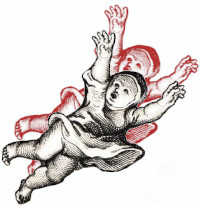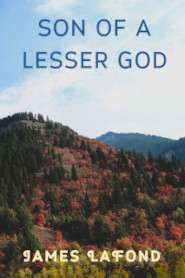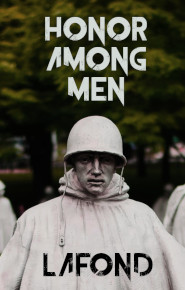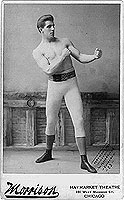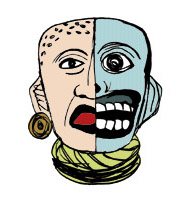Review by V.J. Waks
V. J. Waks is back. We have spoken of looking into Robert Louis Stevenson’s body of work as it is all available through internet sources for the reader, and fits in nicely with our other 19th Century horror reviews ‘My Dead Child Walking In The Garden’. Victoria’s review really got me itching to do my part. I pulled down my copy of The Strange Case of Dr. Jekyll and Mr. Hyde and other stories, from which I will be reviewing Markheim this coming week.
It found its focus in Edinburgh.
Don’t ask why I was there, suffice it that I was. The lines of Victorian houses and buildings, the sheen of a cool night’s rain on cobbles that were new hundreds of years ago; its everything you might have heard it was.
There is an authenticity here, not just in the air of history. Unexpected and inexplicable sounds are heard; one catches the voices of the distant past, as if the dark alleys, wynds and courts still host the specters for which the place is famed. Exposed to the fragrant, inescapable reminders of a city’s often turbulent past, one either walks away from it all, or one takes the place within, where its echoes grow, ever more intense and insistent, until finally emerging in image.
What better place to be as the year wheels about to its close, as the solstice approaches and the wheel turns back again? Whom else might be synonymous with both City and season in his dark, vibrant vision, his brilliant play of light and shadow in so much of his work?
Robert Louis Stevenson was a child of this City in the Victorian era, one that can boast nearly as many changes in science, technology and culture as any modern age. He was born and died in winter; always in frail health, he was a novelist, writer, musician, atheist, bohemian, and compulsive traveler who was well known in his short lifetime and whose work enjoys a steadily progressive interest since the 20th century. Between the years of 1881 and 1885, he created a series of stories broadly encompassing the horror, speculative fiction and fantasy genres that to this day, provoke wonder, open controversy and continuous inspiration in all media: THRAWN JANET, THE BODY SNATCHERS, THE STRANGE CASE OF DR. JEKYLL AND MR. HYDE, and OLALLA. Each and every one is disturbing and often terrifying. Two of these, BODY SNATCHERS and OLALLA, beg a much deeper look into their similarities and differences; both are hauntingly lyric, simple in language yet pack a punch for their story telling styles that are unsurpassed by many in these genres. Here I provide as little as possible in way of synopsis, to avoid spoilers.
THE BODY SNATCHERS:
A fascinating tale of one man’s fall. A pub in Edinburgh finds long time friends at their customary evening, with customary drinks. One, the seediest and most broken of the group, clearly has a past that belies his current low position. On the heels of storm comes news of the nearby need for a doctor. Just as speedily comes the arrival of a man at the pinnacle of his profession – in appearance, arrogance, and wealth. With his entrance – recognition – and the story vaults into a grisly past.
The story of the young medical student was taken from life at some level; Stevenson follows his young protagonist’s association with an unnamed medical genius who presides over the anatomy studies at Edinburgh’s University.
The need for specimens, for which the students paid dearly, far exceeds their supply. We know immediately where this is going. What is unforeseen is the power and poignancy of the portrayal, as our protagonist agonises over, then succumbs to the irresistible lure of ready gain. He is seduced; his seducer is to become the man, so eminent, so successful – who comes to the pub on an errand of mercy. Before that comes terror; in our hero’s despair, as he fights and loses the battle his soul wages to stay in the right. His fall is our fall. His sin is our own – what is on the page is the sin of the world, every world, that allies freedom from want with damnation, a life of guilt, the loss of a career and in this case – even the loss of life. For this story has its grim feet in fact – the notorious, hideously chilling scandal of Burke and Hare, hanged for their collaboration with a physician who somehow eluded the noose, whose merciless and cold-blooded killing of men and women provided a corrupt system with the dissection specimens vital to the furtherance of legitimate inquiry.
It’s not an easy story; Stevenson resolves it by turning it into a ghost story. The ending is rapid, uncertain, out of place almost. It feels so much like the first chapter of a novel that we are left wishing, and wondering, if the author was closer to this than he would divulge. The Devil is definitely in the details, in the choice of the young man—for good, even if it risks exposure and loss of career – or for evil, only slightly less certain of notoriety, but a given for wealth. What would you do?
OLALLA
A story of love – or is it infatuation? Or is it witchcraft? Or is it a story of the sins of the flesh finding expression in the flesh itself? Here the hero is a soldier, a Captain, injured in the ‘right’ war. He is bedridden; to restore his health his physician orders him to seek mountain air, a simpler life. The Captain is placed – and this itself is suspect, for how could the physician not know – in a hilltop residence, whose family of mother, son and daughter are desperate in destitution, and convinced to take him in.
There he will stay and grow strong. There Hell opens.
The family is the remnant of a royal line, so ancient, so revered, that their fall – into degeneration, into savage evil – is barely tolerated by a fearful neighborhood. BODY SNATCHERS is set before us in barely first person; OLALLA is intensely first person and much of its power comes from the incredible use of this form. Here, Stephenson explores the nature of genetic sin – a topic that Lovecraft will exploit in the following decades. Our Captain recovers his strength, cured by the son who is clearly half-mad, and clearly dangerous, in sight of the mother whose own descent continues the legacy of depravity, madness, and bestial need. The daughter of the title resembles strikingly (in Gothic tradition) the mad progenitor of the line.
Here we view obsession; unable to resist the young woman who may or may not be the penultimate leader of a depraved and violent race, our protagonist goes deeper and deeper into confusion, revulsion – and need. At the end, we see the choice once more – will he stay, and continue down the path, a witness or more to his own possible destruction – or will he deny his desire, his love, his own desperate need? What would you do?
Critics of literature and experts continue to consider OLALLA a vampire story. It would be one if there were indeed any solid indications of either creature, lifestyle or victim. All is suggested, and this from an author whose precision in narrative is remarkable – like James’ TURN OF THE SCREW, what is less clear is how the events on the mountain reached this state. There are no creatures of the night unless it be in the living members of this small family, feared, reviled, hated.
My suggestion is different; that the venality, the terrible air of imminent violence (and this is horribly palpable) mirror in a different way Stoker’s presentation of the vampire in a spiritual rather than physical reality. DRACULA ‘Kisses For Us All’ is less a monster than a violation of God’s laws and the vampire lifestyle is always couched in terms of unnatural, immoral needs and behavior. I propose that the sin of past sexual and moral depravity is presented as an exposition, not in the Gothic traditions of classical vampire mythos, but is the downward spiral of the soul into a bestial and inhuman precursor – an unsanctified being. The cruelty, the vicious acts, the implied sexual excess, the abuse of passion, all these are chilling, barely substantiated, eternally felt and clearly drawn elements of a fall – into mindless, hopeless, irrevocable chaos. It is the chaos of the soul, of the spirit, that line between sanity and madness, good and evil, that Stevenson lays out before us. It is a line he will also walk in JEKYLL AND HYDE.
Is the uncertainty of the ending a flaw? To see an ending like this, so similar to the one in BODYSNATCHERS at least in sentiment, and both coming from a writer so precise, so specific, is the to offer the idea of its deliberation, of the writer’s need to pose the question, rather than the resolution to the theme.
I invite comment; apply the same reasoning and ask the same question of JEKYLL AND HYDE. Are these stories of the common flaws of humanity – or the common calls to grace? Did Stevenson believe that life is indeed a series of tests, that of choices? Are we simultaneously the refuse and the testimony of our own universal and very personal morality?
Both stories raise more questions than provide answers. Both are richly satisfying, involving and in the case of OLALLA, sensual. Stevenson presents us with a mirror; we hold that mirror to our faces, waiting to see, wanting to catch a glimpse of the unknown waiting at the edge of vision – needing that thrill of fear at what might come to the mirror and look back at us.
Thank you for that dripping evocation of the ‘bestial and inhuman precursor’ Victoria. You’ve examined this in great detail in your Tau4 series 'The Raw Wet Sound Of Splintering Bone' and Golden Eyes. I suggest, after we split his short horror pieces between us, that we do Dr. Jekyll and Mr. Hyde together, the longest of the batch at novella.
If you would like to read RLS all of his literature is open domain and may be read free online here


